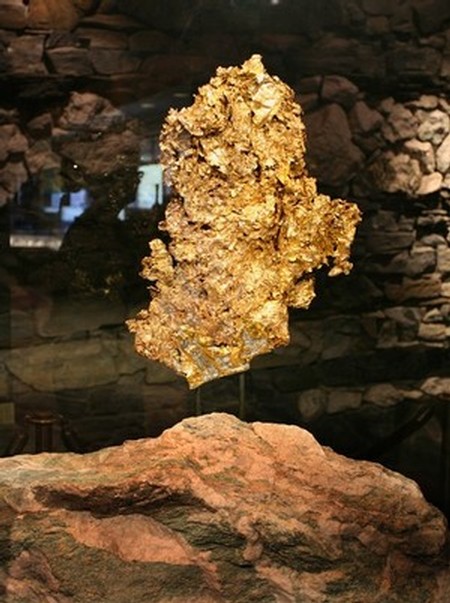Heritage Museum
Open Thursday thru Sunday 11am-5pm
Closed: Thanksgiving, Christmas, and New Years Day
Heritage Museum
Established as a tribute to the Gold Rush, the Heritage Museum displays artifacts from the 19th century gold mining era and from the Miwoks (the early Native American inhabitants who lived in this area). This wonderful collection includes photos, mining maps, personal articles carried from the "Old Countries" around the world, just to name a few.
The Heritage Museum also features a vast display of natural gold specimens acquired from modern-day prospectors who are still very active in the Sierra Foothills. Visitors to the museum can purchase a wide variety of books and educational materials, as well as artifacts and souvenirs related to the Gold Rush era.
Ironstone's Heritage Museum hosts school children from throughout California and the world, welcoming them as they visit to learn about California's early history. For more information about school tours to the Heritage Museum, phone (209) 728-1251 x47.
The Kautz Crystalline Gold Leaf Specimen

On December 26, 1992, owners of the Sonora Mining Corporation mine near Jamestown, CA, Tuolumne County, received an unexpected Christmas present. Excavations in the company's Crystalline mine uncovered a "pocket" of crystalline leaf gold.
Approximately 1,568 ounces of specimen gold were found. The largest piece, the Kautz specimen, weighs in at 44 pounds of gold. This is the largest specimen of crystalline gold in the world. The specimen consists of many layers of leaf gold separated by rock consisting mostly of clay, quartz, maraposite, decomposed shale and pyrite.
Historical Significance
Between 1849 and 1880 several large masses of gold were found in California. The Kautz gold specimen is the largest single piece of gold mined in North America since the 1880's (Source - California State Mining & Mineral Museum).
Just before World War II, several miners in the Mother Lode encountered large pockets of gold weighing several thousand ounces, but none as single masses or crystallized. The Kautz specimen is unique in that it is not only the largest mass of gold specimen found in California since the turn of the century, but it is also the largest specimen of crystallized gold in existence today. Of equal importance, it is gold in the rarest form - crystallized. It is priceless in value.
